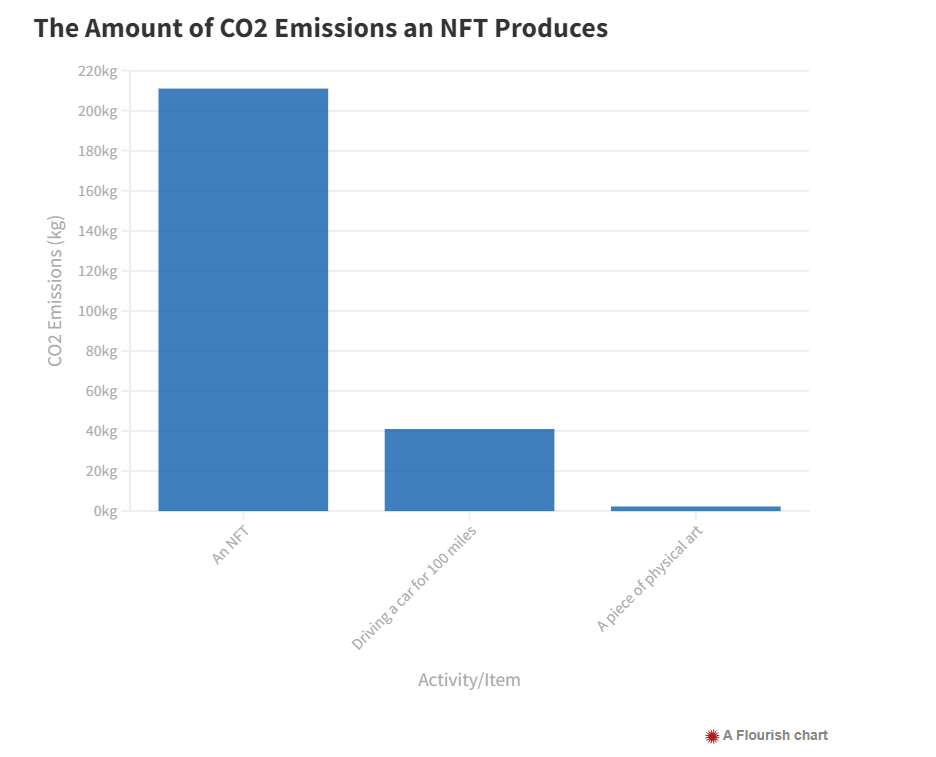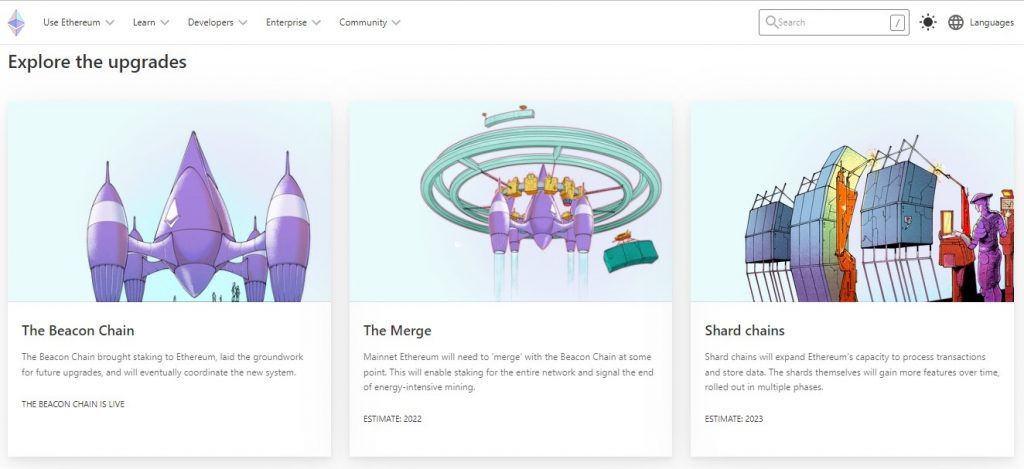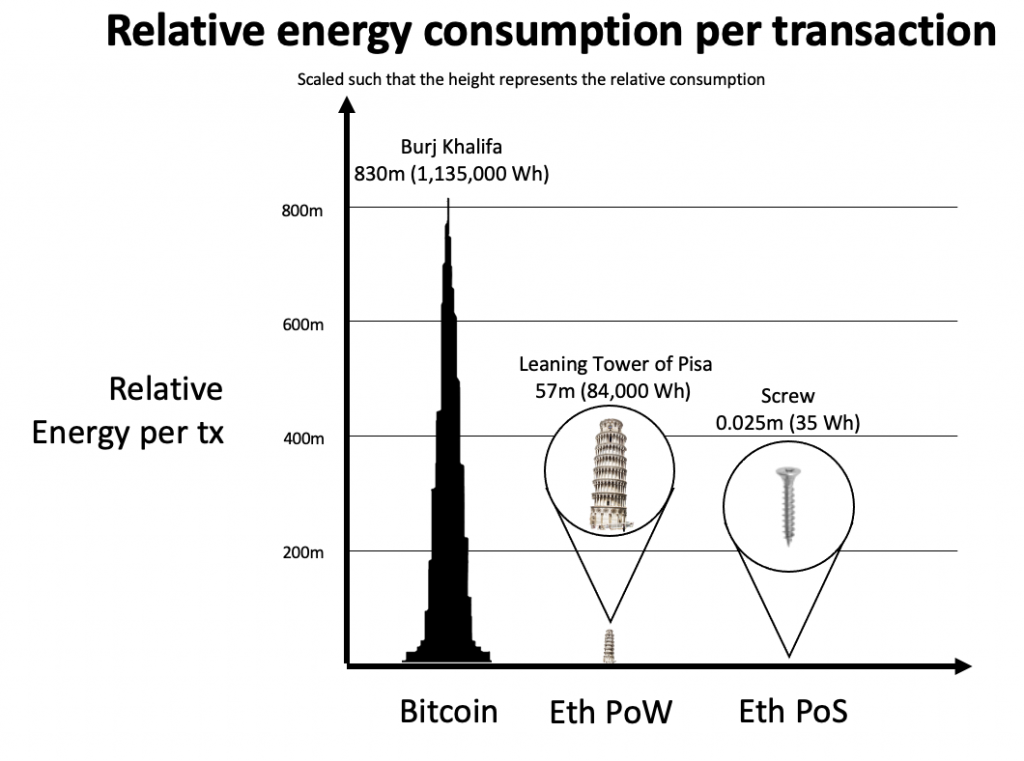NFT Environmental Impact: Pros and Cons

NFT is one of the new trends that has successfully attracted thousands of people into the industry. From NFTs filled with cute cat and monkey avatars to artistic artworks that are worth millions of dollars. NFT Collectors are also diverse, from Beyonce, Michael Jordan, and even Eminem collect and have their own NFTs NFTs. With such enormous public attention, the NFT industry has begun to be criticized by many people. One of the harshest criticisms of NFTs is the negative environmental impact of NFTs. Carbon gas emissions resulting from the NFT transaction have been criticized by many. So, what are NFT pros and cons? Is it true that the environmental impacts of NFT are so significant? This article will discuss the various environmental impacts of NFTs.
Article summary
- 🃏 Non-fungible token or NFT is a digital asset that cannot be replaced or exchanged. All information about an NFT is stored and secured using blockchain technology so it cannot be manipulated or altered.
- ⚡ The NFT industry is often criticized because most NFT transaction uses the Ethereum network which utilizes a proof-of-work architecture so it uses much more energy than other cryptocurrencies. This is the center topic around NFT’s pros and cons.
- 🔌 Every NFT transaction requires a large amount of electricity which leaves CO2 carbon emissions, especially if it doesn’t utilize renewable energy. The Ethereum network requires 23 terawatt-hours (TerraWatt hours/year) and produces 7 Megatons of CO2/year.
- 🌲 Currently, many eco-friendly technologies are being developed in the crypto industry as well as the industry related to NFT. Proof-of-stake network technology, ZK Rollup, and the use of renewable energy in mining are helping to move the NFT and crypto industries towards energy efficiency that is low-carbon and environmentally friendly.
What is NFT and why are so many skeptical of it?
Non-fungible token or NFT is a digital asset that cannot be replaced or exchanged. All information about an NFT is stored and secured using blockchain technology so it cannot be manipulated or altered. Therefore, each NFT product is unique because there is only one identity and code for each NFT.
Some NFT collections sell for millions of dollars, for example, Beeple’s works, Nyan Cat animation, BAYC collection, and Cryptopunks. Even so, many people criticize the NFT industry for various things and one of them is its environmental impact. This critique is one of the harshest critiques of the NFT and has a valid argument. The crypto industry uses a huge amount of electricity, comparable to that of countries like the Netherlands and Sweden.
The debate around NFT pros and cons is because most NFT transactions use the Ethereum network which uses a proof-of-work architecture so it uses much more energy. NFT transactions require a large amount of electricity which leaves carbon emissions if it doesn’t utilize renewable energy.
Also read: What is the Ethereum network?
The environmental impacts of NFTs
Electricity and the crypto industry
The exact quantification of the use of electricity for the Ethereum network and the NFT industry is difficult because research sources and information about them are difficult to obtain. In addition to the fact that the electrical power for the network fluctuates wildly, many Ethereum miners are also anonymous. Therefore, we can only calculate it as a rough estimate where the number can be higher or lower.
One of the people who research the electricity usage of the Ethereum network is Kyle Mcdonald, who publishes a scientific journal on this. He explained that currently (December 2021) Ethereum uses 2.3 GigaWatt of electricity which if calculated per year becomes 23 terawatt-hours (TWh/year). Compared to Ecuador (26 TWh/year) or the US state of Massachusetts (21 TWh/year), this is a significantly large number. Then, it can also be seen as a very small number as it is only 0.1% of global electricity usage. However, the closest and most suitable comparison is with Facebook, a centralized social media with hundreds of millions of users that consume 7.2TWh/year of electricity in 2020.
Despite the comparisons above, we can agree that Ethereum’s power consumption is huge, especially when we see its energy consumption will continue to increase as more users come in. This is one of the central arguments around the NFT pros and cons debate. Additionally, it is important to discuss carbon gas emissions from electrical power, especially if it is from unsustainable energy.
Carbon Emission Footprint from NFT

Kyle Mcdonald is also researching CO2 emissions from the Ethereum network. The black line in the image above represents the average use of Carbon emissions produced, which is 7 MtCO2/year (Megatons) with variations at certain times. If it is calculated as per day, the figure becomes 20 ktCO2/day (Kiloton). This figure is equivalent to Costa Rica (9 MtCO2/year), emissions per year of 500 thousand people in the US, or the equivalent of 2-3 coal power plants (1 coal power plant produces 3 MtCO2 per year).
In the context of NFT, another calculation says that the average NFT transaction results in carbon emissions of 100 kg CO2. Meanwhile, 200+ KgCO2 is required for sales with multiple bids and 500+ KgCO2 for more bids and more sales. It should be noted that the calculation may be lower or higher than reality, as it is only an estimate.

We can see that NFT’s Carbon footprint cannot be ignored due to the nature of the Ethereum network which will use more electricity as the network gets denser and activity increases. This is a valid argument on the NFT pros and cons debate.
block-heading joli-heading" id="environmentally-friendly-initiatives-in-the-nft-ecosystem">Environmentally friendly initiatives in the NFT ecosystem
Ethereum network transition to proof-of-stake

The majority of NFT collections use the Ethereum network as a repository for each NFT’s code and data. Currently, the Ethereum blockchain uses proof-of-work (PoW) technology which provides the best security in a decentralized system. However, this network requires high electrical power to process each transaction. The demand for electrical power also increases along with the network’s activity. PoW technology does not have good scalability, especially for something like Ethereum that wants to attract millions of people and developers to its network.
💡 In comparison, Tezos, a PoS blockchain only uses 0.00006 TWh, compared to Ethereum with 23 TWh.
However, the silver lining here is that Ethereum plans to move away from PoW technology and start utilizing more energy-efficient proof-of-stake (PoS). Most debate about NFT pros and cons often forget that this update has been planned for quite a while. This move was originally referred to as ‘eth2.0’ but the Ethereum site is now calling this update the addition of a “consensus layer” to allow staking and PoS.

This update will put the Ethereum network on par with other PoS networks that are more environmentally friendly and leave a lower Carbon footprint. According to research by the Ethereum Foundation, the move to the PoS network will make Ethereum 99.95% more environmentally friendly than it is today. So, the Ethereum network update has a massive impact on the NFT industry and crypto to move towards a more environmentally friendly and sustainable technology.
Also read: What is proof-of-stake?
Proof-of-stake, Starkware, and Layer 2 technology
Proof-of-stake is one of the technologies that allow various blockchains to become eco-friendly crypto platforms without compromising security and decentralization (in some cases). The technology allows fast transactions at a significantly low cost. This can happen because PoS technology does not take advantage of miners who have to compete to solve complex puzzles to process transactions. PoS simplifies this process and makes it environmentally friendly using staking. Now, more and more new crypto projects are abandoning PoW in favor of PoS technology. Projects such as Cosmos, Fantom, Solana, and Terra use various variations of the PoS system to enable fast and cheap transactions.
Another promising technological development in crypto is Layer 2 and the various technologies associated with it. Starkware, the company that developed the zero-knowledge knowledge (ZK) rollup technology for Ethereum’s layer 2, says the technology can process millions of NFT transactions in a single block. Starkware developed the ZK Rollup technology to reduce the carbon emissions and electricity usage of the Ethereum network which will have a huge impact on the NFT industry. A company like Starkware is a good sign that the NFT and crypto industries are starting to move towards energy efficiency and being more environmentally friendly.
💡 Layer 2 is
a network that functions to improve the performance and capabilities of Layer 1 below it. Example: Polygon Matic and Immutable X.
Renewable energy in mining cryptocurrencies
The last thing the crypto community does to move into an environmentally friendly industry is to use renewable energy as a power base for mining. More and more mining companies are starting to use renewable and sustainable energy for their operations. The debate around NFT pros and cons ignores that a lot of crypto mining companies have already started to shift to the renewable energy sectors or take advantage of excess unused energy.
It is difficult to calculate the percentage of renewable energy use in the mining industry. Some sources mention 70% of the mining industry but the journal says 39% of mining uses renewable energy. In addition, El Salvador encourages miners to move to the country and use volcano-powered electricity for its mining operations.
Several eco-friendly NFT marketplaces
Whatever your position is on the NFT pros and cons debate, the crypto industry provides alternatives If you want to use an NFT marketplace that is environmentally friendly and carbon-neutral. You can start by looking for an NFT platform that uses a PoS network such as Solana, Tezos, Fantom, Flow, and Immutable X. Even though they don’t have a collection as large as OpenSea, some of these NFT marketplaces have a similar experience with OpenSea alongside very low transaction fees.
Here are some environmentally friendly NFT marketplaces:
- Solanart (Solana): NFT marketplace based upon Solana’s eco-friendly blockchain that contains many NFTs collections. Solanart is an open NFT marketplace where anyone can register to create their own NFT. Solana’s transactions are one of the cheapest and fastest.
- Teia (Tezos): Teia (formerly Hic Et Nunc) is an NFT marketplace on the Tezos blockchain containing various artistic NFTs from small artists. In fact, this marketplace attracts many local artists from Indonesia because of the simple and cheap price of making NFTs.
- Rarible (Tezos, Polygon, and Flow): Rarible is a large NFT marketplace with diverse collections including blue-chip NFTs Like BAYC. Rarible is the marketplace with the largest NFT collections on this list. The process of buying, creating, and selling NFT on Rarible is also very easy to do.
- PaintSwap (Fantom): The Fantom network’s NFT marketplace has a variety of unique collections that you won’t find in any other NFT marketplace. However, the NFT collection on PaintSwap is still very limited but the buying and selling process is very fast with low transaction fees.
- Magic Eden (Solana): This Solana network’s NFT marketplace focused on a unique NFT collection that is only available on Solana. Magic Eden also has various NFTs of blockchain games within the ecosystem. This marketplace is one of the most popular NFT markets on Solana, therefore the NFT collection on Magic Eden is quite expensive compared to other NFT markets on this list.
Buying NFTs and cryptocurrencies
You can start investing in NFTs by buying cryptocurrencies in the Pintu app. Through Pintu, you can buy cryptocurrencies such as XTZ, ETH, SOL, and other cryptocurrencies in an all-in-one convenient application. Then, you can use these assets to buy NFTs in the marketplace.
Pintu is also compatible with popular wallets such as Metamask to facilitate your transactions. Download the Pintu app on Play Store and App Store! Your security is guaranteed because Pintu is regulated and supervised by Bappebti and Kominfo.
You can learn more about cryptocurrencies through the various Pintu Academy articles that we update every week! All Pintu Academy articles are made for educational purposes only, not financial advice.
References
- Justine Calma, The climate controversy swirling around NFTs, The Verge, accessed on 16 March 2022.
- Gregory Barber, NFTs Are Hot. So Is Their Effect on the Earth’s Climate, Wired, accessed on 16 March 2022.
- Beth Howell, Are NFTs Bad for the Environment?, Eco Experts, accessed on 16 March 2022.
- Raisa Bruner, Are Environmentally-Friendly NFTs Possible?, Time, accessed on 17 March 2022.
- Leigh Matthews, How Some NFTs are Becoming More Sustainable, Leaf Score, accessed on 17 March 2022.
- Leigh Matthews, Why NFTs Are a Climate Change Nightmare, Leaf Score, accessed on 17 March 2022.
- Kyle Mcdonald, Ethereum Emissions, Medium, accessed on 17 March 2022.
- Memo Akten, The Unreasonable Ecological Cost of #CryptoArt. Part 1, Medium, accessed on 17 March 2022.
Share


